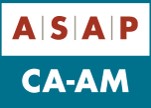
IS YOUR ALLIANCE DRIVING YOU CRAZY?
"Shoot me if I ever consider taking on another alliance team," moaned Sharon, who had recently left her job as an alliance Co-Leader on a commercial product team, formed as the result of a strategic alliance.
Unfortunately, Sharon's glum view of life on an alliance team is not all that unusual. Anyone who has ever worked on an alliance is keenly aware that success does not come easily. In fact, research indicates that the rate at which alliances underperform or fail is still hovering at around 70%!! And yet, more and more companies are relying on alliances to play a bigger role in their business strategy. What's wrong with this picture?
Let's start by looking first at just what is an alliance? It is some form of organizational structure that covers a broad range of collaborations and partnerships involving shared risk, rewards and control. The alliances we work with are engaged in a variety of contractual arrangements involving at least two organizations. They have decided to align with each other because there is something missing from their individual organization's strategic capabilities. For example, a strong marketing and sales company may need to enhance its product offerings. And another company, who has spent years developing a product, may now need the help of that first-rate marketing and sales company. They may decide that together they will make a strong team in the marketplace and decide to form an alliance in order to realize their mutual value proposition.
The other thing that distinguishes an alliance from a merger or acquisition is that in an alliance each organization retains its own independence and identity. However, if the alliance is going to work out successfully for both parties over time, there needs to be, first, an understanding and acceptance of the other's business strategies and culture. Prospective alliances are researched and identified as potential business partners by a 'deal team' who proceeds to perform due diligence on the best candidates and takes the process through to final contract negotiations. Historically, these deal teams are made up of business development staff, subject matter experts, lawyers and finance staff. However, recently alliance managers and human resources professionals have been included on these teams. Alliance managers will be executing the alliance and many of the issues faced will be cultural, so companies are beginning to recognize the importance of their perspectives before the deal is signed.
Once the contract is in place the real fun begins. Teams are formed and business plans are prepared. Goals and roles are spelled out and joint processes for managing the work are developed. If the alliance is complex, there is a multi-level governance structure put into place to provide oversight and manage conflicts, when, not if, they arise. Sounds pretty straight-forward. So why the 70% disappointment rate?
After working with alliance teams over the last decade and in listening to the horror stories of participants in the American Management Association courses on alliances that I teach, the difference between alliances that keep you up at night and those who learn how to manage through the inevitable rough waters boils down to these simple to say, but harder to implement elements. Successful alliance teams:
- Continuously measure and monitor their mutual value proposition. I often find myself reminding my alliance teams that there really was an important business reason why the alliance was formed in the first place. Often times that mutual value proposition has been forgotten or there were never any metrics established to ensure that the value for each company and the alliance as a whole was continuously being monitored. One of the best alliances I worked with would meet face- to- face every month to review business performance and jointly decide on strategies to improve results.
- Make an effort to understand and accept the business strategies and culture of their alliance partner. This process should be started in the due diligence phase, however, when the deal is tossed over the wall to the people who need to work together, often times they jump into the work itself without engaging in a 'getting to know you' phase. In an alliance one of the reasons for due diligence is to find out what you are getting into with this potential partner. Sometimes that is not always uncovered until you start 'living together'. Unfortunately, too often I hear, "Why can't they do things the way we do". However, successful alliances find ways to compromise and accommodate to the culture and processes of each other.
- Formally and jointly develop an alliance team charter. Most alliance teams operate virtually, meaning that much of the work and meetings are not done face-to-face. However, if there is one meeting that should be done face-to-face it is the full alliance team's onboarding or chartering session. This 1-2 day session should include some 'getting to know you' exercises, but the majority of time is spent on setting out joint goals, establishing roles and accountabilities, identifying 'rules of engagement' for communications, decision-making, etc. The decisions made during this session and the relationships that are formed jump-start the team for success.
- Don't let tough decisions or conflict fester. Facing tough decisions and becoming embroiled in disagreements are just a part of doing business for alliances. The most innovation comes from alliance teams who see things from different perspectives and can get through the rough waters that are inevitable. The worst alliance teams let conflicts fester and avoid making tough decisions. They pay the price in missed opportunities and loss of confidence and trust in the team. Alliance team sponsors' need to convey the message that they expect the team to work through its issues to mutual satisfaction. However, they also make it clear that if this is not possible, they expect a joint escalation to the next level of governance (not each part of the team running it up their own company's flag pole).
- Keep stakeholders out of the alliance 'sandbox'. I was called in by two alliance co-leaders (one from each company) who on our first call jointly told me: "The problem isn't with the alliance team itself. They all seem to get along and we make joint decisions that focus on what is best for the alliance. The problem is that when each team member goes back to their respective organizations, their bosses question and openly disagree with the alliance team's decisions. The solution: they developed an escalation process that required stakeholders to stop sending decisions back to the alliance team, but instead forced them to send their complaints/requests for reversals up the governance chain. Guess what happened to stakeholder interference?
- Conduct periodic 'health checks' to determine if , in fact, the alliance is driving alliance team members crazy or sailing along pretty smoothly. One alliance team I was called upon to help was extremely dysfunctional, from the top-down. Nothing seemed to be working right. So one of the first things we did was to conduct a survey of everyone on the alliance team, including the governance sponsors to try to identify where the most critical 'points of pain' were. And then we pulled the team off-site, presented the results and facilitated the development of a Plan of Action. We attended all of the monthly governance meetings, and held semi-annual 2 days planning sessions, including reviewing the results of the current health check survey. This went on for 2 years. Today, there are no longer comprehensive surveys done, but the alliance team continues to be known as a high performing team in the industry. Not all health checks need to be as frequent or as comprehensive. However, successful alliance teams periodically take time-outs to assess not just what they are doing but how they are doing it.
The percentage of underperforming or failing alliances can be reduced by embracing and undertaking new approaches to structuring and nurturing alliances. If they were important enough to enter into in the first place, then they are important enough to invest in their start-up and their ongoing development. You may not need to set up a formal alliance management function, but the old, ad hoc approach to signing the deal and crossing your fingers should be thrown out the window and as former New York City Mayor, Rudy Giuliani once said: "Change is not a destination, just as hope is not a strategy".
If you would like more information about Alliance Development, or any of the other EquiPro programs, please contact Lynda at lmcdermott@equiproint.com







